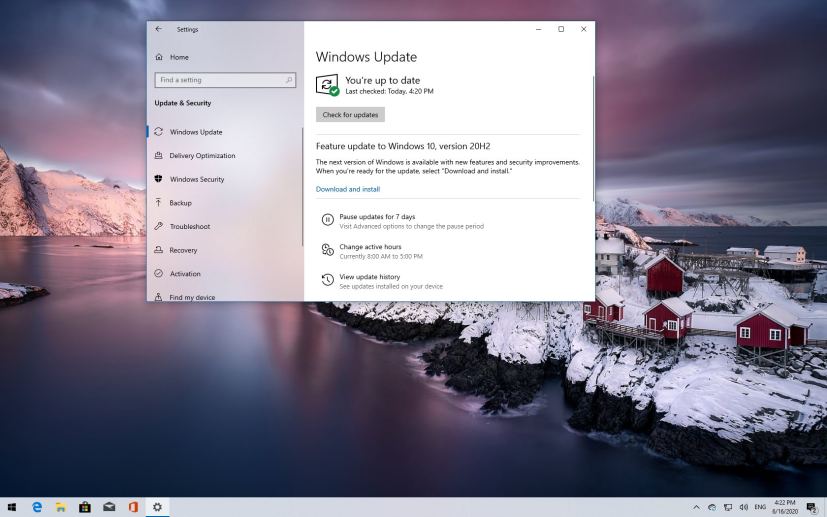Windows 10 20H2 (October 2020 Update) is now broadly available as an optional update. If your device is known to have a good installation experience, it will be available through the Windows Update settings page.
However, since you are now in control of upgrading new feature updates, the question remains whether you should install it now or wait some additional time. The reason is that it’s a known fact that during the early days, devices have higher chances of running into problems.
In this guide, we will try to determine whether you should install or skip Windows 10 20H2.
Is it safe to install version 20H2?
According to Microsoft, the best and short answer is “Yes,” the October 2020 Update is stable enough for installation. However, the company is currently limiting the availability, which indicates that the feature update still not fully compatible with many hardware configurations. Also, at the health dashboard website, the software giant has revealed some problems during the rollout. For example, as part of the known issues, there are some audio driver problems. An issue that causes the loss of system and user certificates when upgrading using the Media Creation Tool, Update Assistant, or ISO file. However, the problems are not as serious as we’ve seen with previous releases.
Also, the answer to whether you should install this version depends on the release already installed on your computer. If the device is already running version 2004, you can install version 20H2 with minimal to no risks. The reason is that both versions of the operating system share the same core file system. As a result, the new features have already been deployed in an inactive state. The system only needs a small “enablement package” to activate the new version with a quick reboot that doesn’t require reinstallation.
Using the enablement package approach significantly reduces the number of problems you may see using an in-place upgrade or clean installation. However, it does not resolve the problems with the feature update. Although the new operating system does not seem to have major issues thus far, you may still encounter isolated problems with the new changes.
On the other hand, if you’re running an older release, such as the November 2019 Update (version 1909), you may also be able to upgrade, but you should proceed with more caution.
Usually, upgrading from an older release available in a previous year requires full reinstallation, and this process can cause a lot of unexpected problems. In addition to possible unknown and known issues as a result of new changes in the new development, you can also come across software and compatibility problems if the device has out of date drivers, poorly designed apps, programs designed for an old version of the operating system, or security software.
Should I wait to install version 20H2?
When a new version of Windows 10 becomes available, it’s never a good idea to rush the upgrade since it’s known that during the initial rollout of a new release, unknown bugs, errors, and compatibility problems are expected.
Once a new version of the operating system releases, you’ll receive a notification in the Windows Update settings letting you know if the update is ready on your device. If you don’t see the notification, you shouldn’t try to force it using the Media Creation Tool or Update Assistant because you’re likely to run into issues, such as “This PC can’t be upgraded to Windows 10,” “This PC can’t be upgraded to this version of Windows 10 because of a service or driver that’s not ready yet,” or similar errors.
When a new feature update becomes available, it’s always recommended to wait for at least three to four quality updates before planning the upgrade.
If the device uses an older version of the operating system and it’s not experiencing any issues, you should wait a little longer. However, you shouldn’t skip the update completely. Eventually, the version on the computer will be discontinued and no longer will receive security and improvement updates, which could lead to other problems and make the device vulnerable to attacks.
Update May 12, 2021: As Microsoft resolves the last standing known issues with version 20H2 and 2004, it should now be safe to upgrade to these versions from older version 1909 or older releases.

